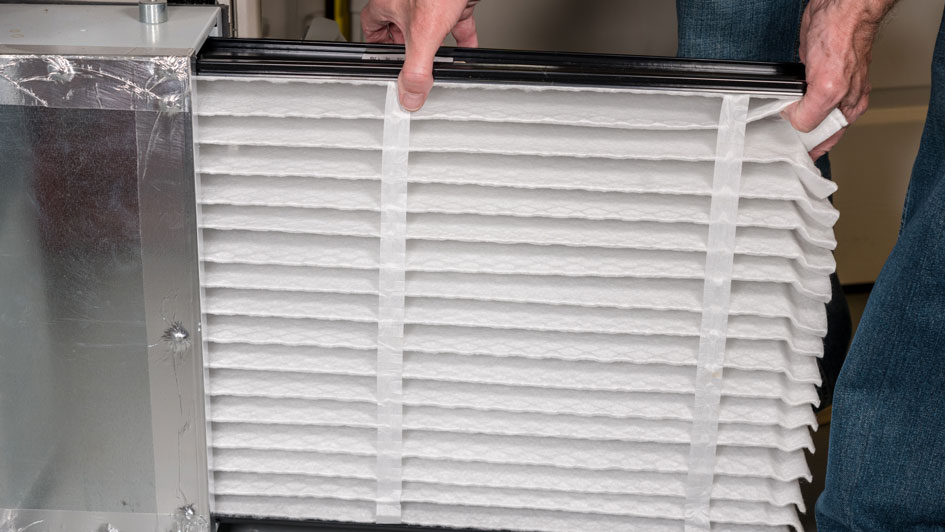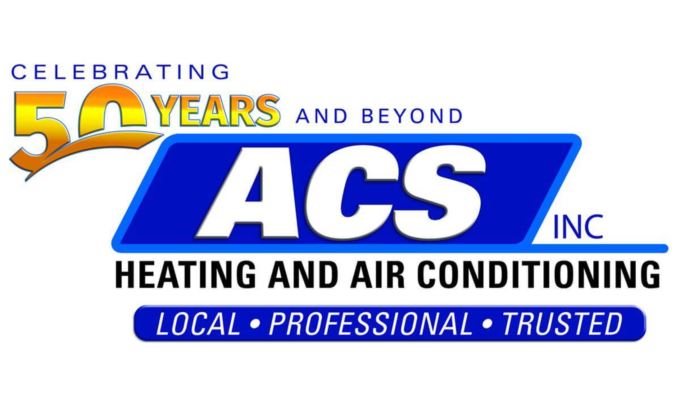
Selecting the correct furnace filter and changing it when it is dirty is as important to your HVAC system as changing the oil is to your car. Each plays a crucial part in keeping its system operating safely, efficiently and for a long time.
A clogged furnace filter loses its effectiveness, permitting potentially harmful particles to flow through your home. It also slows airflow, which can damage your furnace and reduce its life span.
Making certain your furnace uses a clean filter that is suitable for your needs is not merely about keeping your furnace operating efficiently. It’s also about providing excellent indoor air quality for your home.
Your health is important to the HVAC pros at ACS Heating and Air Conditioning. We've long worked with an eye on bettering indoor air quality in Tucker. Here, we’ve answered common questions about HVAC filters, including that particularly tricky question of what direction do you point a filter in your furnace or air conditioner?
When Should I Replace My Furnace Air Filter?
Experts stress it's vital to replace dirty air filters in a furnace or air conditioner regularly. Soiled filters cause the system to worker harder than it should because it takes extra work to pull air through the plugged-up filter.
Officials advise checking your furnace filter every month and replacing it if it’s dirty. You’ll know if it is dirty because it will filled with dirt or dust. People who have pets that shed will very likely have to replace their furnace air filter more often, because a good air filter will trap pet hair circulating in a home.
Where Is the Air Filter in My Furnace?
In general, a furnace air filter is normally located in the return air duct or blower compartment before the return air reaches the furnace. This is so air flowing into the system is filtered before it passes through the furnace components and is heated.
Depending on the type of furnace, the filter may be located on the right, left, bottom or in some cases, within the furnace. It's usually housed inside of a slot, frame or cabinet for simple access and replacement. Always refer to your furnace's owner manual for information about filter location of your furnace.
Is a Furnace Filter the Same as an Air Filter?
The straightforward answer is, yes. In HVAC, a furnace filter and an air filter or air conditioning filter are effectively the same thing. While people may call them different things based on the current season— warm or chilly months—they are all filters that clean the air in your HVAC system.
They each eliminate dust, allergens, bacteria and other particulates from the air that is drawn into the furnace and air conditioning system, making certain the air flowing through your home is clean and safe.
What Is a MERV Rating and What Rating Is Best for Me?
Once you find your old furnace filter and decide when it should be replaced, it’s time to pick a replacement. That means picking the level of filtration that you need. One method to do this is by choosing an appropriate MERV rating for your needs.
MERV stands for Minimum Efficiency Reporting Values. The MERV rating indicates the effectiveness of air filters at trapping airborne contaminants. The rating scale ranges from 1 to 20, with higher numbers indicating enhanced capabilities to filter smaller particles.
Experts say a filter with a MERV rating between 8 and 13 offers a good balance between having healthy indoor air quality without unnecessarily restricting airflow. However, people with specific health conditions could need a a higher MERV rating.
Which Way to Put the Air Filter in a Furnace or Air Conditioner
Putting an air filter in a furnace or air conditioner properly is crucial for the efficient operation of the heating or cooling system. Air filters are designed to be installed in a specific direction, indicated by an arrow printed on the side of the filter frame. The filter should be installed with this arrow pointing toward the furnace or air conditioning unit, which is the direction of the airflow. If you're not sure about the airflow direction, remember that air always moves from the return duct to the heat or cooling source. Therefore, be sure that the arrow points in the direction of the furnace or air conditioner.
Many people are confused by which direction to point an air filter. To help remember, consider taking a picture with your cellular phone after the filter has been properly installed by a professional. Or, you also could ask a technician to use a marker to write on the outside of your furnace which direction the filter should point. A great time to ask about this is during a regular furnace maintenance appointment.
Changing Your Furnace's Air Filter
Replacing the filter on your furnace or air conditioning system is a quick and easy process. Here is a step-by-step breakdown of how to take out a dirty air filter and exchange it for a new one:
- Turn off your furnace: Be sure to turn off your furnace before starting up the process.
- Look for the furnace filter: Typically, the filter is found within the furnace or in the air return vent. Make a mental note or write down which direction the arrow points on the filter, because you’ll want the arrow on the replacement filter to point similarly.
- Remove the old filter: Be diligent not to knock out any dust or particles.
- Document the date: Write down the date you replaced the filter on the new filter's frame. This will help you keep track of when it's time for another replacement.
- Slide in new filter: Put in the new filter with the arrow pointing in the direction of the furnace, which is the direction of airflow and should be the same direction the arrow pointed on the old filter you are replacing.
- Secure the filter: Make sure the new filter fits nicely and close any latches or clips that secure it in place.
- Turn on your furnace: Once the new filter is safely secured, you can turn your furnace back on.
Will a Dirty Air Filter Cause Problems for a Furnace?
The shortest answer is, yes, a dirty air filter can cause a furnace to cease working or reduce its lifespan. Changing your furnace or air conditioner filter is one of the simplest things you can do to keep your system operating correctly.

